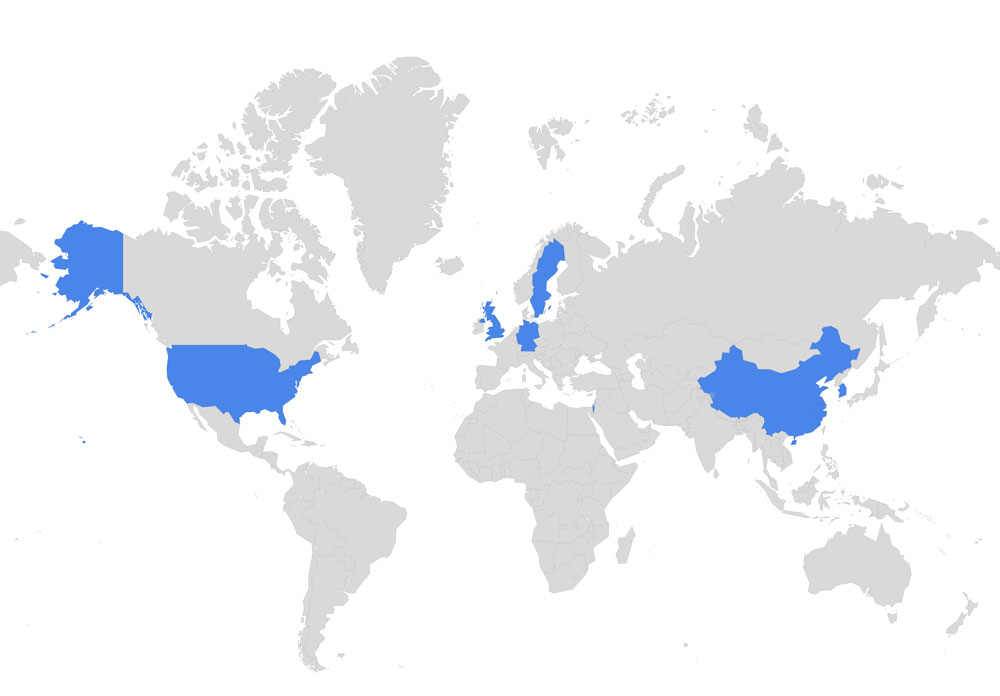After the prototype instrument at NPL, IONTOF GmbH have successfully commercialised it as the M6 Hybrid SIMS. There are now many OrbiSIMS instruments around the world as shown in the map below.

|
National Physical Laboratory |
Chemical Imaging Infrastructure Tascon GmbH Korean Basic Science Institute |
Hong Kong University of Science and Technology Brigham & Women’s Hospital | Harvard Medical School |
OrbiSIMS is a versatile instrument for biological, organic and inorganic studies of surfaces and interfaces. Many instruments have now been installed around the world with a growing community of users and a rapidly growing repertoire of publications.
NPL is keen to:
NPL is the UK's National Metrology Institute, developing and maintaining the national primary measurement standards. The National Centre of Excellent in Mass Spectrometry Imaging (NiCE-MSI) at NPL and collaborators introduced OrbiSIMS in 2017 for 3D chemical imaging of molecules and it has become increasingly popular for biological and material sciences owing to its ability to give simultaneous high confidence in molecular identity and localisation.
With a growing number of instruments internationally, there is an increased need for reproducible measurements. In recent works we realised that Signal, Noise and Transmission form a metrology triangle that can provide a secure foundation and lead to innovative analytical methods and new technologies.
OrbiSIMS is done on a hybrid instrument with a dual analyser instrument combining a Time-of-Flight (ToF) mass spectrometer (MS) and an OrbitrapTM MS, which confer advantages of speed and high-performance mass spectrometry, respectively. The VAMAS TWA 2 A37 MS interlaboratory comparison aims to build on the methods previously published and study reproducibility of OrbiSIMS experiments for organic and inorganic materials.
Repeatability measured
Noise characteristics measured
Conversion factor of Orbitrap intensity to counts
Signal linearity of instrument
Reproducibility of relative and absolute signal
Recently we conducted a systematic study of two key parameters in OrbiSIMS transfer optics. The Orbitrap requires ions to have a potential of approximately 57.5 V and lower kinetic energy distribution than results from the SIMS process. The sample is biased by a sample target voltage, VT, necessary to match the acceptance window of the OrbitrapTM analyser. A transfer system using an ion guide with He gas at a pressure P slows the ions and reduces their kinetic energy distribution through inelastic collisions with gas atoms. The data acquired using the protocol will be used to map secondary ion intensity in function of VT and P.
Measurement of the OrbitrapTM analyser noise distribution requires a source of ions that is stable over the time frame of the measurements. The protocol describes how to perform simple measurements of a reference silver sample across a range of ion intensities, beam currents and how to measure stability of the primary ion beam current at the sample.
“Going beyond the mass scale: Exploiting state-of-the-art instrumentation to add molecular structure to 3D mass spectrometry imaging”
Our research and measurement solutions support innovation and product development. We work with companies to deliver business advantage and commercial success.
Contact our Customer Services team on +44 20 8943 7070